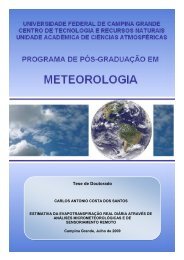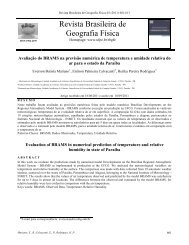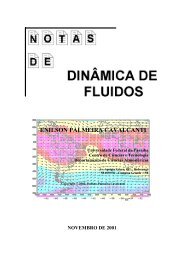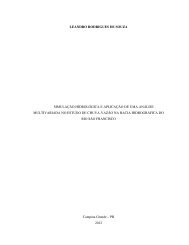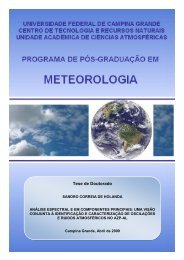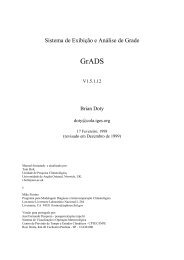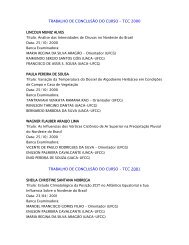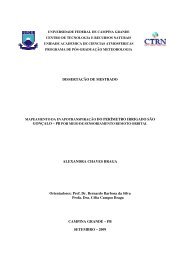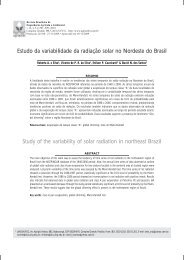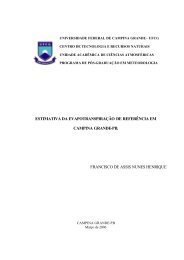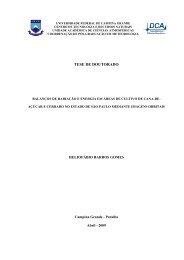You also want an ePaper? Increase the reach of your titles
YUMPU automatically turns print PDFs into web optimized ePapers that Google loves.
4. The aerodynamic resistance to heat transport (r ah ) is computed in model F12 as is u * instep 3. A series of iterations is required to determine the value for r ah for each period thatconsiders the impacts of instability (i.e., buoyancy) on r ah and H. Assuming neutralatmospheric conditions, an initial r ah is computed using Equation (26). z 1 is the height justabove the zero plane displacement (d ≅ 0.67 × height of vegetation) for the surface orcrop canopy and z 2 is some distance above the zero plane displacement, but below theheight of the surface boundary layer. Based on experienced analysis, values of 0.1 meterfor z 1 and 2.0 meters for z 2 are assigned. Steps 3 and 4 are completed by running modelF12 to compute initial values of u * and r ah . The file for z om from model F11 is input alongwith u 200 , which was calculated above with equation (29). Save the output files and themodel 5 .5. To compute the sensible heat flux (H) from Equation (25), the near surfacetemperature difference (dT) for each pixel needs to be defined. This is given asdT = T z1 – T z2 . The air temperature at each pixel is unknown, along with explicit valuesfor T z1 and T z2 . Therefore, only the difference dT is utilized. <strong>SEBAL</strong> computes dT foreach pixel by assuming a linear relationship between dT and T s :dT = b + aT s (32)where; b and a are the correlation coefficients. To define these coefficients, <strong>SEBAL</strong>uses the two “anchor” pixels where a value for H can be reliably estimated. Values for Hand dT at these “anchor” pixels are computed in a spreadsheet format as explained inAppendix 8 and in the following steps. The linearity of the dT vs. T s function is a majorpresumption of <strong>SEBAL</strong>. However, research by Bastiaanssen and others and by theUniversity of Idaho at Kimberly, indicate that this assumption appears to fit a large rangeof conditions.a) At the “cold” pixel, we define the sensible heat flux as H cold = R n – G - λET coldfrom Equation (23). Experience in Idaho shows that the most “cold” (wet)agricultural fields have an ET rate about 5% larger than the reference ET (ET r ).Hence, ET cold is assumed to be 1.05 × ET r (which was calculated earlier in the<strong>SEBAL</strong> process, Appendix 3). H cold is now calculated in the spreadsheet as:H cold = R n – G – 1.05λET r . dT cold is computed in the spreadsheet using theinverse of Equation (25):dT cold = H cold × r ah_cold / (ρ cold × c p ) (33)5 Note that because dT is defined as ∆T between z 1 and z 2 , the estimate of T air as T air = T s + dT is not areal, representation of air temperature. This is because the T at z 1 is generally somewhat less than T s . Inaddition, T s is a radiometrically derived surface temperature, whereas T at z 1 is an aerodynamicallyrepresentative temperature.30



